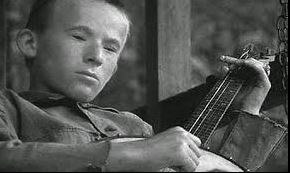Billy Redden Disability: Billy Redden, born on October 13, 1956, is an American actor renowned for his iconic portrayal of a backwoods mountain boy in the 1972 cinematic classic Deliverance.
In this influential film, Redden assumed the role of Lonnie, a banjo-playing teenager from the rural landscapes of north Georgia, delivering a memorable performance in the legendary “Dueling Banjos” scene alongside Drew Ballinger, played by Ronny Cox.
Hailing from Rabun County, Georgia, Billy Redden’s roots are deeply embedded in the very backdrop that served as the setting for his standout role in Deliverance.

His cinematic contribution, particularly in bringing Lonnie to life, has left an indelible mark on film history, showcasing his talent and the unique charm he brought to the character.
Beyond the screen, Redden’s portrayal of Lonnie continues to be celebrated, cementing his place as a notable figure in the world of cinema.
His birthplace, Rabun County, adds an authentic touch to his connection with the film and its representation of the picturesque Georgia landscapes.
Also Read About: Olivia Pacino Disability: Al Pacino Daughter’s Condition
What Is Billy Redden Disability?
Billy Redden Disability: Billy Redden, born in 1956 in Georgia, rose to cinematic prominence at 15 with his unforgettable portrayal of Lonnie, the banjo-playing character in the film Deliverance.
Redden’s youth and unique appearance contributed to the authenticity of his role in the movie, where he played a pivotal scene performing the iconic “Dueling Banjos” alongside actor Ronny Cox.
It’s crucial to note that despite his character’s portrayal in the film and the book it was based on, Billy Redden himself does not suffer from any mental or physical deformities or deficiencies.
Rather, his distinctive appearance, further enhanced by makeup, brought a memorable and impactful quality to his portrayal of Lonnie.

Contrary to the visual on-screen narrative, the musical talent exhibited in the “Dueling Banjos” scene was provided by local musician Mike Addis, not by Billy Redden.
This behind-the-scenes detail adds another layer to the movie’s production, highlighting the collaborative effort that contributed to its success.
The “Dueling Banjos” scene has left an enduring imprint on viewers, becoming a cultural touchstone. Regrettably, it has also led to certain stereotypes, with some people playfully referencing the scene when entering small towns or wooded areas.
Despite the unintended consequences, the scene remains a powerful cinematic moment, demonstrating the film’s impact on popular culture and perceptions.
Some Other Acting Credits
Following his impactful role in Deliverance (1972), Billy Redden transitioned away from the screen but found a new niche as a tourist guide for those eager to explore the iconic filming locations.
While his on-screen presence briefly faded, his connection to the film and its settings remained palpable as he shared the experience with visitors.
In 1984, Redden made a cinematic comeback with Blastfighter, marking his return to acting. True to his distinctive persona, he once again portrayed a banjo player, a signature element that would feature in subsequent roles.

Notable among these was a cameo appearance in Tim Burton’s Big Fish (2003), where Redden’s banjo-playing charm added a touch of authenticity to the film.
During this time, he could also work at a cafe near the filming location, showcasing his grounded connection to his craft and the community.
Redden continued to showcase his banjo-playing talent in later films, including Outrage: Born in Terror (2009).
His journey from a memorable role in Deliverance to becoming a tourist guide and later returning to acting adds a fascinating layer to his career, demonstrating resilience and versatility within the dynamic landscape of the film industry.

